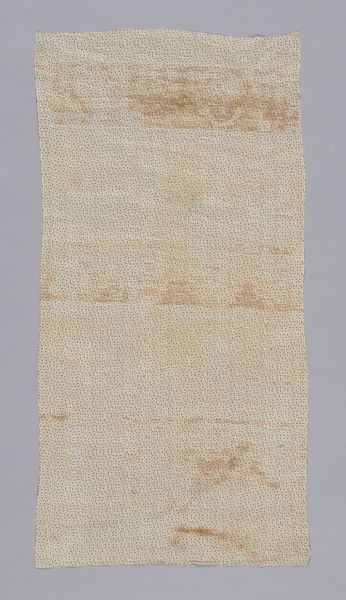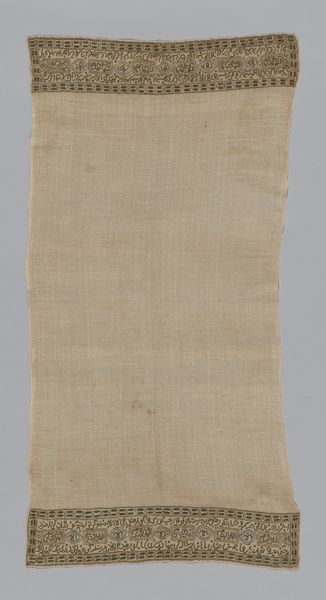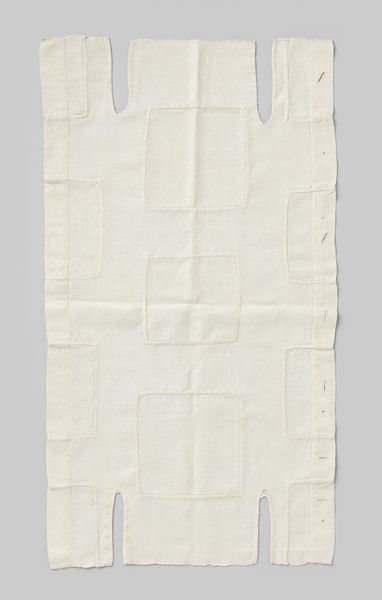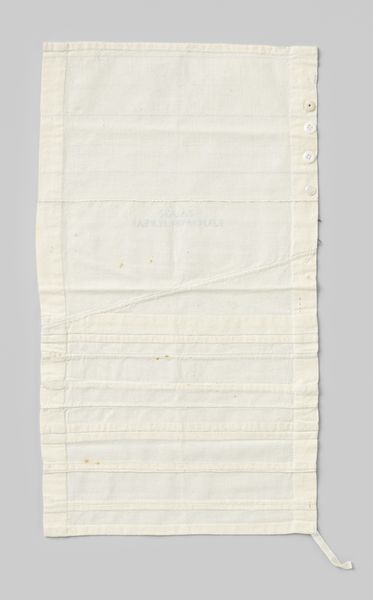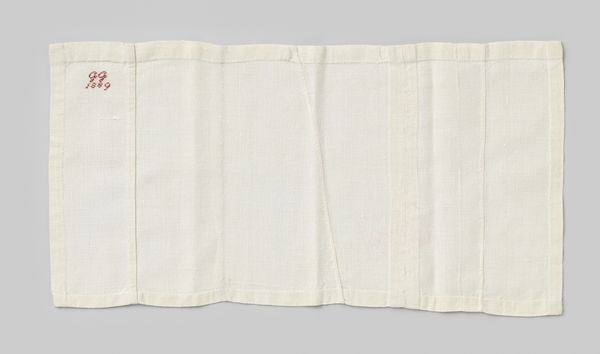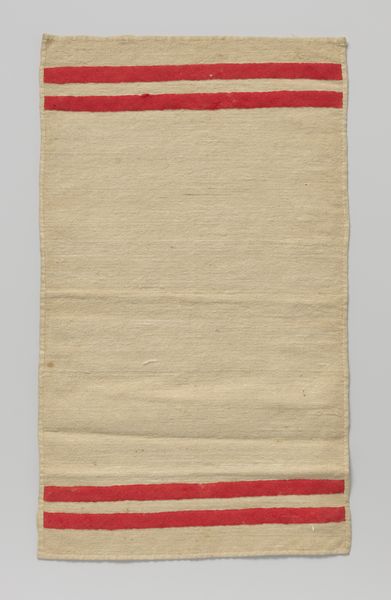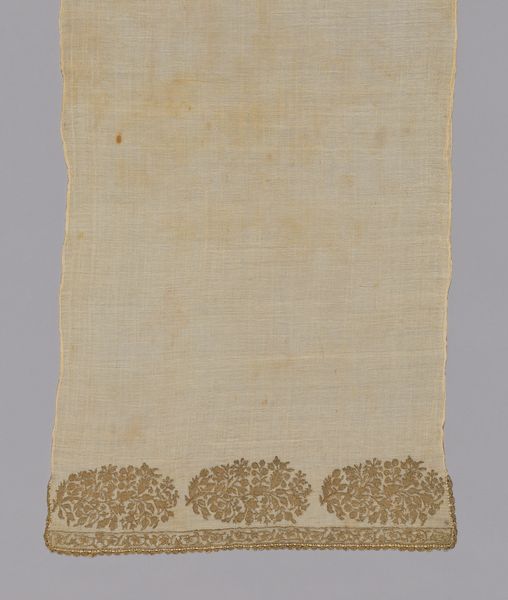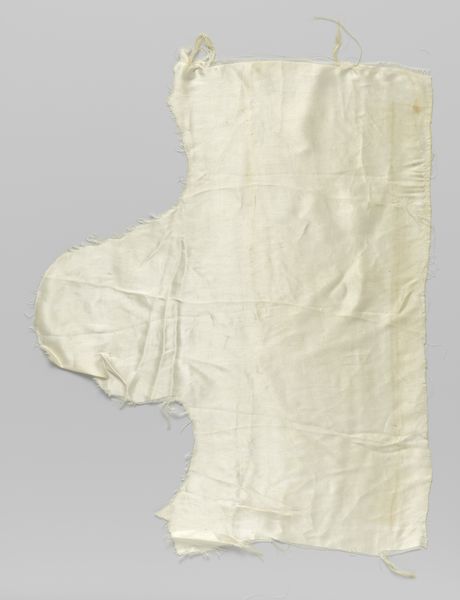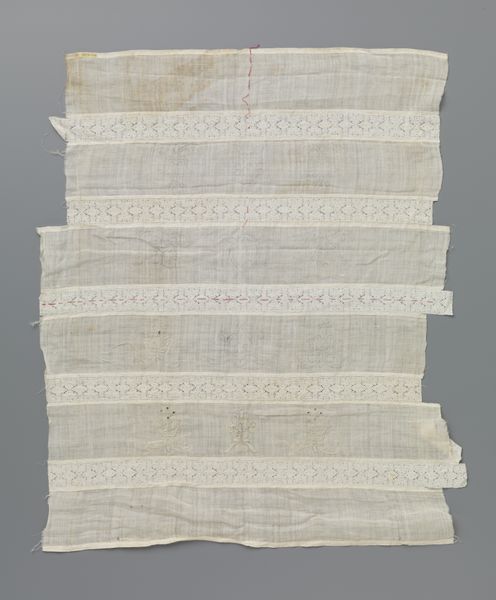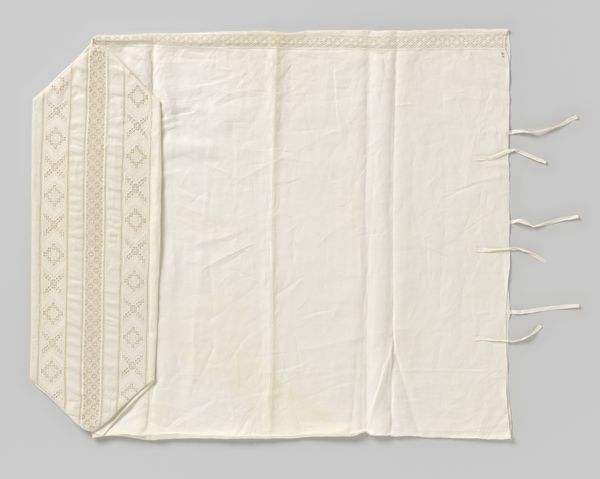
Witte rechthoekige doek met ingeweven geometrisch patroon c. 1836 - 1898
0:00
0:00
fibre-art, weaving, textile
#
fibre-art
#
weaving
#
textile
#
geometric
Dimensions: height 10.5 cm, width 16.5 cm
Copyright: Rijks Museum: Open Domain
Curator: This is a woven textile by Susanna Maria van Pabst Rutgers-Linse, entitled "Witte rechthoekige doek met ingeweven geometrisch patroon", or “White Rectangular Cloth with Woven Geometric Pattern," likely made between 1836 and 1898. It's a study in subtle textures, entirely in off-white, but I find it quite powerful nonetheless. What are your first impressions? Editor: My immediate response is quietude. There's a certain calm, a reserved intimacy to its humble presence. At first glance it is minimal, almost ascetic, yet as your eye lingers, those meticulously woven geometries speak of dedication, tradition, perhaps even quiet rebellion. Curator: Rebellion? That’s interesting! Tell me more about that idea. Editor: Well, at this time, particularly for women, artistry was so often tied to domestic duties, or seen as secondary to masculine creativity. Working within traditional "feminine" crafts like weaving, and elevating them, experimenting with complex geometric structures—this, for me, transcends simple domesticity and touches upon reclaiming and rewriting boundaries. This pushes it towards a quiet revolution, I think. Curator: I see what you mean. It is fascinating to consider the social implications of the piece alongside the craft itself. To me, though, the dedication required for such delicate weaving, combined with the use of geometry that is often tied to divine concepts, points towards the artist creating a meditation. Each line is prayer, a connection. Editor: Yes! A meditation… that resonates deeply. Perhaps that meditation itself becomes a form of defiance, of centering oneself, demanding recognition through the very act of creation. It’s amazing how an object that looks so simple on the surface can contain layers upon layers of social, historical, and personal narrative. Curator: Absolutely. And perhaps that is part of its appeal. It invites us to bring our own interpretations, our own experiences, to weave our own stories within its geometric structure. Editor: Beautifully put. It really underscores the fact that these objects from the past aren't static; they continue to evolve as we engage with them in the present. A living testament to the interconnectedness of art, history, and our individual lives.
Comments
No comments
Be the first to comment and join the conversation on the ultimate creative platform.

